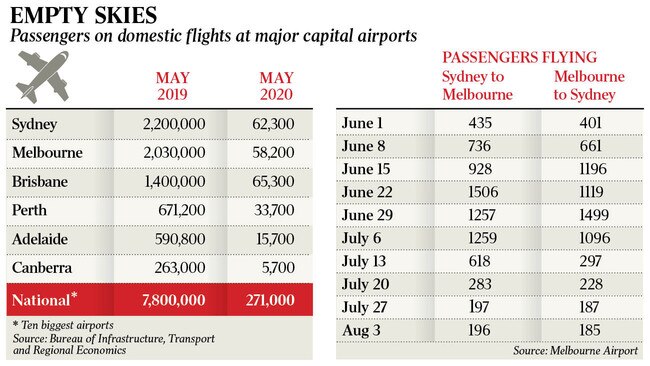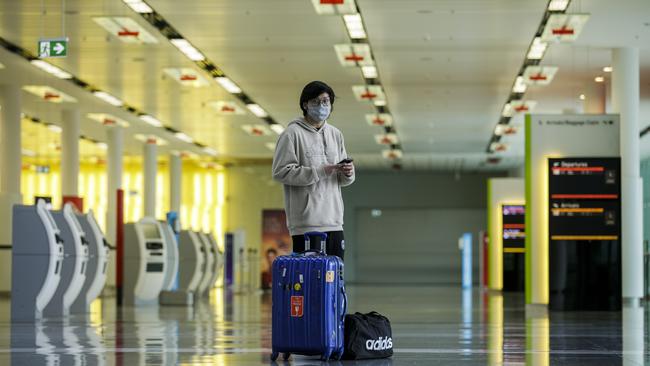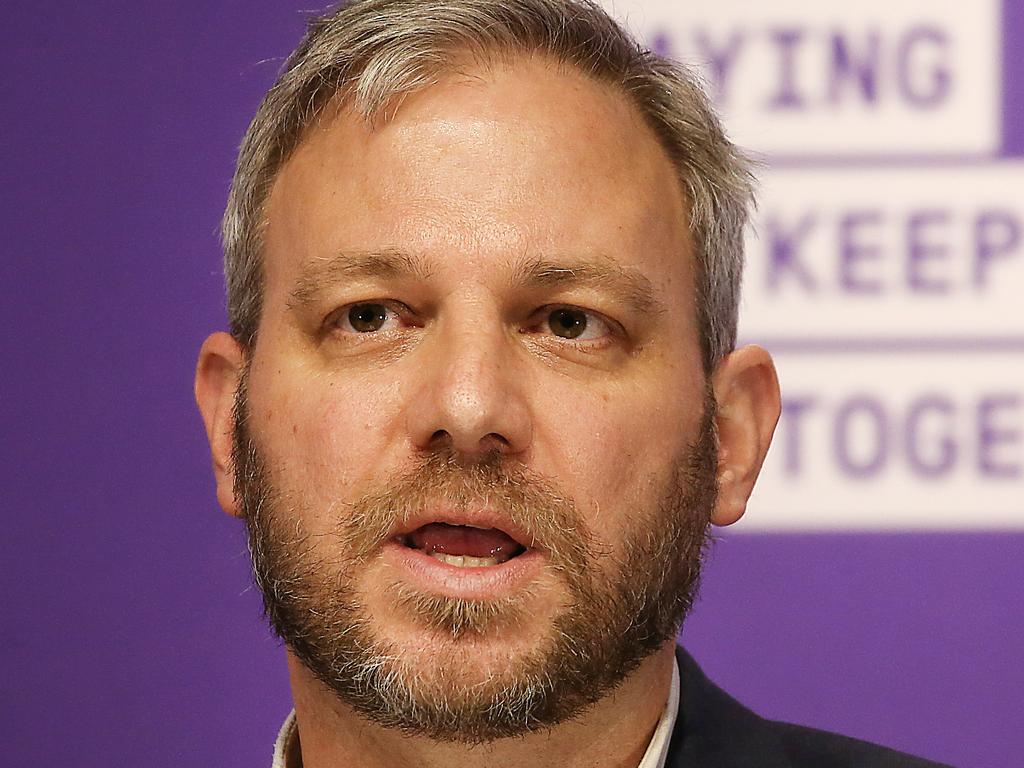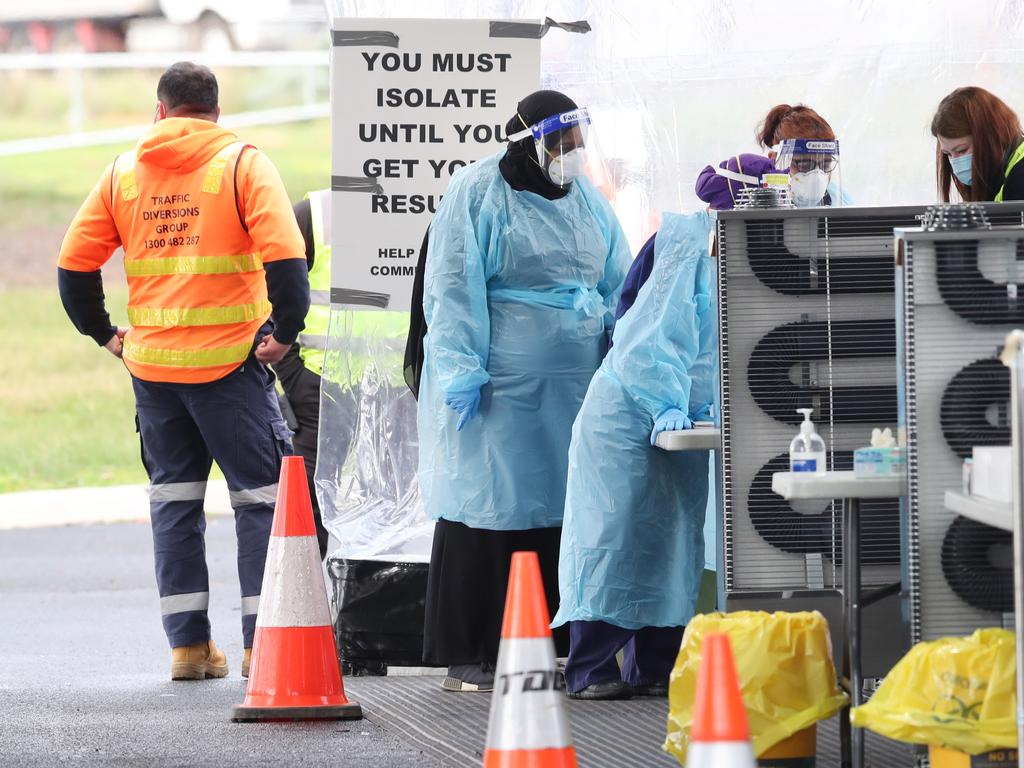Grounded airports ‘on a runway to ruin’
Canberra Airport asks PM to back a plan to get domestic flights back to at least a quarter of their pre-COVID capacity.

With his airport inching closer to financial ruin with each day of the COVID crisis, Canberra’s Stephen Byron is taking matters into his own hands, writing to Scott Morrison to propose a national plan to get domestic flights back to at least a quarter of their pre-pandemic capacity.
Already Australia’s family-owned national capital airport has seen passenger numbers dwindle from more than 8000 a day to fewer than 100, and has made the decision to close on Saturdays.
The situation is no less grim for other airports across the country, with latest federal government data showing domestic flights numbered just 7500 in May compared with 54,400 the same month a year ago.
Across the whole country, passengers totalled 180,000, down 96.4 per cent on May 2019 when 4.9 million people travelled on commercial flights within Australia.
As far as Mr Byron is concerned, Canberra Airport simply cannot afford to wait until mid-2021 for a vaccine to be made available in order for air travel to resume. “It’s a bit unfortunate that through state border closures, we’ve been put into this stage-five lockdown where we’re operating at 90 to 95 per cent shutdown,” he said.

“That’s even more draconian than the construction industry in Victoria, which has been permitted to operate at 25 per cent capacity even in stage-four lockdown.”
His proposal relies on the states’ and national chief medical officers’ advice to run a limited domestic aviation network between the major cities from October 1, with passengers not required to quarantine on arrival.
Although states such as Victoria with large outbreaks of COVID-19 would be excluded, Mr Byron is confident the medical experts could develop a plan to make it work. “Let’s remember the state medical officers aren’t political operatives. They aren’t charged with making political decisions or judgments, they’re charged with what’s the right safety outcome,” he said.
“If they shut us down by 75 per cent, the equivalent of a stage-four lockdown, that would be a measurable start and allow a level of activity that would allow the return of people to the workforce.”

The alternative was “basically no domestic air travel until the rollout of a vaccine, which at best is going to be sometime between Easter and the middle of next year”, he said. “If that’s the case, we have to consider certainly for our airport, how do we operate between Oct¬ober 1 and June 30 next year with less than 100 passengers a day?
“Wednesday is normally one of our busiest days … and we’ve 92 people flying out of the airport.That’s not sustainable.”
As difficult as the pandemic had been for Canberra Airport, Melbourne was even worse off.
With the annexing of Victoria combined with a ban on international passenger arrivals, numbers through the terminal plunged 97.6 per cent. Melbourne Airport chief Lyell Strambi said the restrictions had created a drag on the whole transport system.
“Nine out of the country’s 10 busiest routes originate from either Melbourne or Sydney,” he said.
“Domestic aviation needs those markets reconnected if it’s to make any meaningful ground towards rebuilding a domestic network that’s large enough to support all the airlines currently competing for passengers.
“There’s a natural handbrake on the nation’s economic recovery as long as state and territory borders remain closed to passengers from Victoria and NSW.”
Sydney Airport chief Geoff Culbert recently joined Qantas Group head Alan Joyce in calling for a co-ordinated approach to travel restrictions, with set triggers in place for closing or reopening state borders.
With the gateway currently burning through an estimated $10m a month, Mr Culbert said domestic travel restraints were the most extreme in our history.
Mr Strambi was also of the opinion that domestic travel must be allowed to restart. Brisbane Airport, which has borrowed more than $1.5bn to get through the pandemic, has had three consecutive months of plus 90 per cent falls in passenger numbers.







To join the conversation, please log in. Don't have an account? Register
Join the conversation, you are commenting as Logout